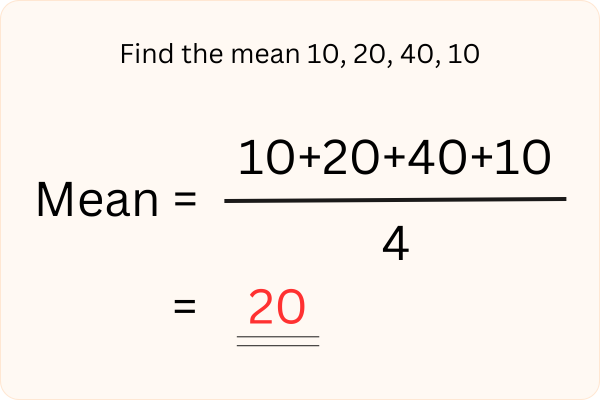When diving into data analytics, some of the first concepts you’ll encounter are mean, median, and mode. It will keep coming at you over and over again in any and every project that you work on. These three measures of central tendency help you understand and summarize data. Whether you’re analyzing test scores, survey responses, or sales figures, knowing how to calculate and interpret these values is essential. Do you need math to become a data analyst or data scientist? The answer is yes! But don’t be discouraged if math isn’t your favourite subject as learning simple concepts like mean, median, and mode will take you a long way in the world of analytics.
1. Mean (Average)
The mean, often referred to as the average, is probably the most familiar concept. To find the mean, you simply add up all the numbers in your dataset and then divide by the total number of values.

Why it’s useful:
The mean gives you a quick snapshot of your data’s overall performance like monthly average sales of chocolates. However, be careful with outliers—extremely high or low values can skew the mean, making it less representative of the dataset.
2. Median (Middle Number)
The median is the middle value in a dataset when the numbers are arranged in order. If there’s an odd number of values, it’s the one right in the center. If there’s an even number, the median is the average of the two middle numbers.

Why it’s useful:
The median is particularly helpful in datasets with outliers because it isn’t swayed by extremely high or low values. It gives you a more accurate sense of the “typical” value. For example, in real estate, the median house price is often used instead of the mean because it better reflects the typical property value, especially in markets where a few ultra-wealthy buyers can send average prices through the roof. (Looking at you, billionaire beach houses!)
3. Mode (Highest Occurring)
The mode is the value that appears most frequently in your dataset. There can be more than one mode if multiple values have the same frequency.

Conclusion
Understanding mean, median, and mode is crucial for anyone starting out in data analytics. These concepts not only help you describe data but also provide insights into its distribution. As you get more comfortable with these basics, you’ll be able to apply them to more complex analyses and draw deeper conclusions from your data.
